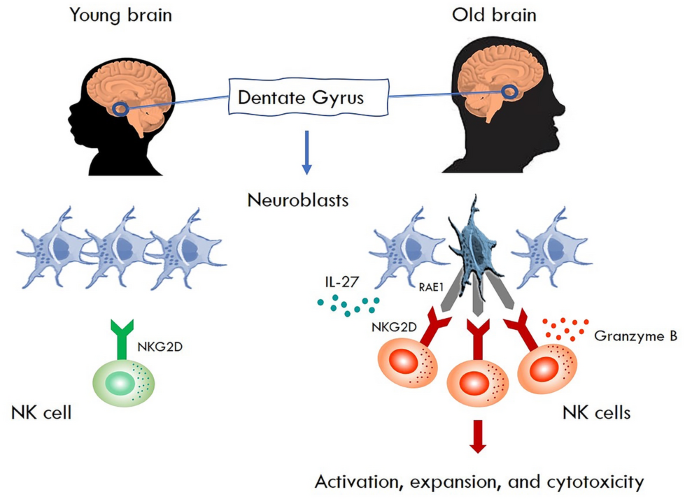So what protocol does your doctor have to stop Natural Killer Cells?
Did your doctor do one fucking thing from 5 years ago to get further research on this done?
Neural stem cells sustain natural killer cells that dictate recovery from brain inflammation January 2016
Or any followup research on this from last year?
Brain transforms natural killer cells that exacerbate brain edema after intracerebral hemorrhage May 2020
How the fuck do you stand for such incompetence when it is going to affect your children's and grandchildren's recovery?
The latest here?
Activated Natural Killer Cells Hit Neurogenesis in the Aging Brain
Neuroscience Bulletin (2021)
Why neurogenesis is attenuated in elderly individuals is an intriguing question that has raised renewed interest. Mechanisms associated with declined neurogenesis in the aged brain have been attributed to inflammatory cytokines [1]. More recently, a specific role for interferon-γ (IFN-γ) produced by CD8-expressing cytotoxic T cells has been implicated [2]. These observations suggest a scenario in which neurogenesis, at least in part, is regulated by immune cells within the aging brain. This raises several interesting questions with regards to the characteristics of specific immune cells within the brain, the signals for their expansion and maintenance, and their role in affecting neurogenesis and cognition during normal brain aging.
Further detailed insights into these processes have now been provided. In a recently published study [3], Wei-Na Jin et al. analyzed the subtypes, frequencies, and location of immune cells in young and aged brains. Strikingly, an abundant population of natural killer (NK) cells in the dentate gyrus of brains from old humans was observed. NK cells are innate lymphocytes, with some adaptive features, that normally play a critical role in fighting virus infections and tumors [4]. These NK cells outnumbered neutrophils, monocytes, and adaptive T and B lymphocytes in the brain, and were characterized by the expression of specific activation and cytotoxicity markers. These and other observations led the authors to conclude that NK cells may accumulate in specific regions of the human brain with age, in particular in the dentate gyrus. Similar observations were made in mouse studies. To gain a more detailed understanding of the effects of aging on the immune landscape in the dentate gyrus, the authors performed single-cell RNA sequencing-analysis of immune cells obtained from dentate gyrus tissues of young and aged mice. Dentate gyrus-specific alterations in NK cells were found for molecules related to cytotoxicity, target cell specificity, tissue retention, and cytokine-mediated signaling. Flow cytometric analysis corroborated these studies, revealing that CD69 (an activation and tissue residency marker), NKG2D (an activating cell surface receptor), and perforin and granzyme B (cytotoxicity mediators) were markedly increased in NK cells from the aged dentate gyrus.
During organ inflammation, NK cells are often recruited to the target tissue [5]. To determine if NK cells in the dentate gyrus were recruited from the periphery or expanded locally, the authors tracked NK cells using advanced parabiosis experiments, conjoining the vasculature of a mouse where all NK cells are labeled with the fluorescent protein tdTomato with that of a normal mouse. In such experiments, few NK cells accumulated in the dentate gyrus of parabiotic wild type mice, suggesting that recruitment may have a limited contribution to NK cell accumulation in the aged dentate gyrus. These studies, together with additional fate mapping analyses, provided further support for local expansion and accumulation of NK cells in the aged dentate gyrus. Furthermore, the authors found that the NK cell chemokine CCL3 and the growth factors GM-CSF, IL-2 and, particularly, IL-27 were produced in relatively high amounts in the interstitial fluid of the aged dentate gyrus. In studies determining whether IL-27 derived from aged neuroblasts was necessary for local expansion and accumulation of NK cells in the aged dentate gyrus, it was observed that an IL-27-neutralizing antibody blocked these effects. Together, these and other results suggested to the authors that neuroblasts sustain NK cells and augment their cytotoxicity in the aged dentate gyrus mediated, at least in part, via IL-27 (Fig. 1).

No comments:
Post a Comment